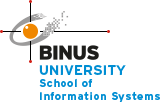Standard Costing

Standard costing is mostly used in companies with repetitive operations and where inputs that are used to produce outputs can be specified. Standard costing system consists of record of standard costs for each operation for each responsibility centre, traced actual costs for each operation to each responsibility centers, comparison of standard and actual costs, investigation of variances alongside the corrective actions to be taken, as well as monitoring of standards that are adjusted to reflect changes in the usage or price.
Standard costs should be set based on each production unit according to the quantities and prices of the resources, such as materials, labour, and services, that are used in order to perform each operation that needed to be done to make the product. Product standard costs are the addition of standard costs from oprations that are done to produce a product. Approaches such as historical records and engineering studies are used to set standard costs. Historical records are used to estimate labour and material usage, however past inefficiencies may affect current standards and the approach does not focus on finding the best combinations of resources. Engineering studies is the detailed study of each operation done under controlled conditions. Through high levels of efficiency conditions, the study can measure quantities of labour and materials required. Based on efficient purchasing from standard costs, target prices then can be applied.
Measuring outputs of units produced from a department that makes different products or do different operations may not be possible. However, it can be solved through making sure of the time needed to make each product while working under efficient operating conditions. The time calculation is called standard hours produced, which represents the output measure that acts as a common denominator to add different items together.
There are five purposes of standard costing, which are provision of prediction towards future costs that is to be used for decision-making, provision of challenging target to motivate individuals, provision of reliable and convenient sources of data for budget preparation, can be a control device towards activities that deviate from the plan and alert managers to device corrective actions, and simplifying task of tracing costs of products for profit measurement and inventory valuation.
Reconciliation of actual profit with budget profit is done by adding together favourable variances to budgeted profit and deducting adverse variances, which eventually will result in actual profit. A general rule of thumb is that positive variances are favourable whereas negative variances are not.
When the actual quantity of resources consumed is different from the standard quantity, quantity cost variances happen. Adverse variances are when there is excessive usage of materials and labours which came from the usage of inferior materials, careless handling of materials, and failure to maintain machinery in proper conditions. Price variances are when actual prices of paid resources are different from the standard price.
Using the standard variable costing system, fixed overheads are not allocated to the products. Sales margin variances are also reported in terms of contribution margins and the fixed overhead expenditure variance is reported. On the other hand, using the standard absorption costing system, fixed overhead are allocated to products and fixed overhead volume variances are made from the process. Reporting of sales margin variances is also measured in terms of profit margins. The fixed overhead volume variance is not helpful for cost control, but the variance is required for financial accounting purposes.

